Exports will be central to Cammell Laird and BAE System’s joint bid for the Government’s £1.25billion new-build Type 31e frigate programme, a conference has heard.
The news was announced at a special ‘supplier conference’ organised by Cammell Laird, BAE Systems and the Society of Maritime of Industries on Merseyside which the companies claim involved more than 200 delegates from supply chain companies in the UK and overseas.
The procurement process to design and build five Royal Navy T31e frigates was launched by the Government in 2017 and a key objective of the programme is to attract overseas orders. Cammell Laird is bidding for the tender as prime contractor, in a teaming agreement with BAE Systems, with a warship design known as ‘Leander’. If successful it could see steel cutting beginning on Merseyside in March 2020.
BAE Systems Type 31e Chief Engineer Gavin Rudgley said the design draws from experience of several designs, the Khareef corvettes built for Oman, T45, T26 and the RCB2 OPV built for the Royal Navy.
“The MoD has commissioned the Type 31e as a replacement for the Type 23 in respect of its general purpose capability, global operations, effective warfare and combat suite, reasonable crew capacity, aviation and mission boat capabilities,” he said.
“Maturity, adaptability, affordability and capability are seen as the key ‘win’ themes for the Type 31e programme. It is expected to be around 4000 tonnes and 120 metres in length, accommodating 120 crew. The Navy want to see the vessels operating in Gulf conditions, there’s not a strong emphasis on ice capability or cold conditions, which also fits in well with exports.
The Leander design incorporates much mature engineering and equipment from other programmes such as Type 45, Type 26 and the River Class Batch 2 offshore patrol vessels. The boat bay and mission space is scaled from what has already been developed for the Type 26. And the HVAC [heating, ventilation and air conditioning] is based on practical experience, with both Khareef and Type 45. Leander uses the same combat management system being rolled out to Type 23, and also planned for Type 45, Type 26 and the Queen Elizabeth class carriers. It will further feature the 997 radar and Sea Ceptor anti-air missile system now entering service on Type 23 and ordered for Type 26. That drives commonality across the fleet, and provides the MoD with a solution that is already certified in-service, through its safety case, and cyber-assured.”
Cammell Laird’s Type 31e project director Tony Graham told the conference the £250million price tag for the ‘powerful and affordable’ Leander will excite many overseas customers, as it lays plans for a global warship exports division.
“In order to win this competition, we must be better, cheaper and faster than anyone else,” he said. “Fundamentally, we recognised that this ship has to work straight ‘out of the box’,” he said. “Leander is a very practical warship with credibility, a degree of ruggedness and robustness, and delivering low risk lifecycle costs.
We have a global campaign plan for the Type 31e programme and have identified opportunities in more than 20 countries. Our intent is to build a warship export business based on Leander. The MoD has indicated it is willing to sign a business agreement alongside the contract to help industry export the Type 31e. This joint approach between the Government and the Royal Navy producing a proper business plan for exports has never been seen before.”
Cammell Laird managing director Linton Roberts said an overwhelming response to the conference provided a strong endorsement of the aims and aspirations of the National Shipbuilding Strategy.
“We have been overwhelmed by the response to this conference, to the extent that we have had to arrange a second date to ensure that all interested companies are able to attend. I think that this level of interest is a very strong endorsement of the national shipbuilding strategy and its aims and aspirations. We at Cammell Laird are very excited by the opportunity, and specifically the design we have developed jointly with BAE Systems – which we have named Leander.
My message to the conference is that we are open for business, open to new ideas and open to new commercial relationships. We want to hear about what they can do to help us make Leander a national and international success not only for our customer, the Royal Navy, but also for UK PLC.”
The conference heard that the MoD is expected to award the Type 31e contract in March 2019.
Cammell Laird is set to launch a Type 31e website in March 2018 and will issue further details to suppliers shortly to secure quotes before submitting a final tender in the autumn.


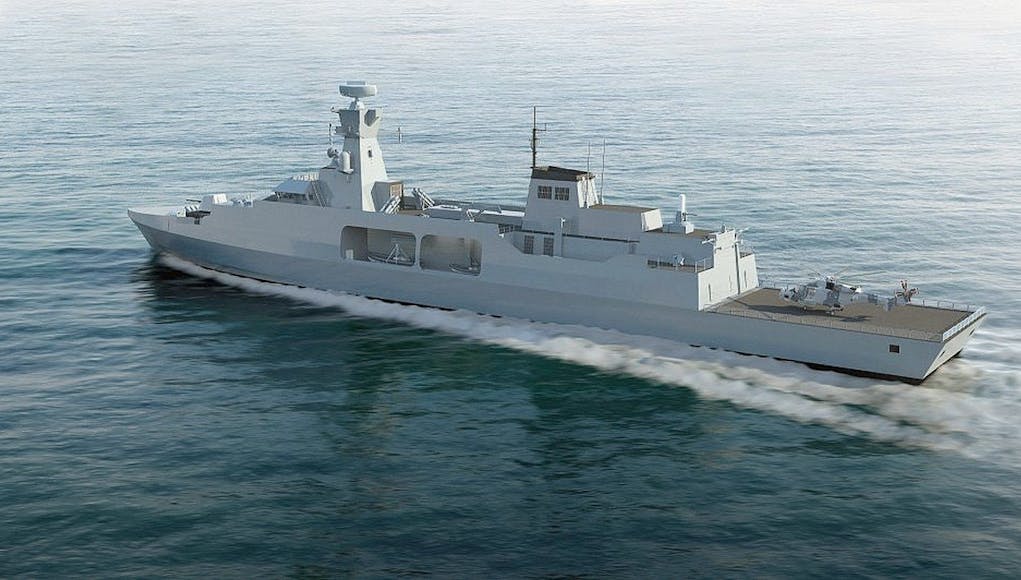
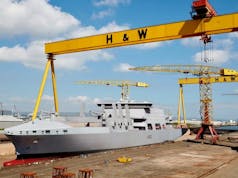
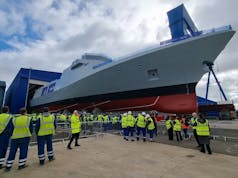



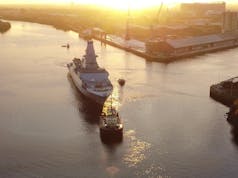
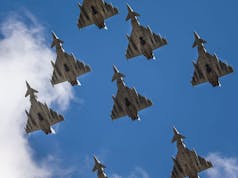

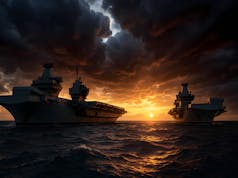


I fully support the T31e project and hope the RN will have a fleet in excess of 10 ships.
However the export potential of these ships is limited by the global competition amongst naval shipbuilders, many of these companies have excellent export records in selling frigate/destroyer warships.
They simply are not going to roll over and let the UK into this market, the UK is going to have to offer a platform that is very capable and affordable when compared to rival designs.
We will also a fairly large dose of luck as well.
good to see things are finally moving up a gear, with hope, we may even see some clearer plans for the ships themselves.
i’d still expect the t 31 details will be drip fed by the m.o.d as is the usual
Interesting BAE comment regarding the Type 26 frigates and Sea Ceptor:
“Sea Ceptor anti-air missile system now entering service on Type 23 and ordered for Type 26.”
Initially Type 26 frigates were to have systems taken from retired Type 23 – which would have been a real juggling act for nearly everything except for the CIWS pods.
With this comment from BAE about the Sea Ceptor been “ordered” for the Type 26, it appears that at least one crucial part will now not have to be cannibalised immediately from a Type 23.
That said, it is probable (and sensible) to take out still serviceable systems from retired Type 23’s; but the point of the order for new Sea Ceptor’s is less pressure on organising the removal/refit time planning.
Please ignore my above post it is incorrect, the systems swap is between the Type 23 and Type 31e, not the T23 and T26.
(Sorry but I can’t delete it!)
Although the vessel from BAE/Cammell Laird looks good and has a really useful foundation based on the experience of the T45/T26/T23 and OPV, it would be so much better if all the existing UK shipyards that have so far placed bid’s could be included in the final winning team as subcontractors.
This outcome would benefit all yards and ensure the vessels can be constructed quickly, which in itself would improve the chance of international orders. Obviously the winning bid team would get the lion’s share… but otherwise what is the point of a national building strategy if just a few yards win this build.
Give the ones that don’t win the solid support ships.
Well, best of luck to all the bidders. The Cammel offering looks very much like a stretched River 2. No surprise there I suppose; their best chance of hitting the £250m price. In the midships section I can see the R2 crane along with deck mounted anti ship missile launch tubes and a hint of vls tubes I think, which would be a novel place to fit them.
http://www.savetheroyalnavy.org/leander-concept-for-royal-navy-type-31e-frigate-inspires-interest-from-british-industry/
Better images on Save The Royal Navy. Shame its from BAE as there looks to be genuine promise in creating a circa £250m light frigate from this.
Good pics. From the CL project director quotes it looks like the ‘Leander’ unique selling points will be low risk re-use of proven technology and the mission bay.
I’m def not a fan of Bae but have to say this sounds good but lets see the competition and may the best design win.
Not a fan of Bae but this looks good. Let the competition begin and the best design win it.
“The Navy want to see the vessels operating in Gulf conditions, there’s not a strong emphasis on ice capability or cold conditions”
Which is of course a mistake, considering the Atlantic, Arctic and Baltic requirements.
Nah, it is positively tropical around the Falklands at this time of year, SMH.
Strange but the very same interview when printed in the SAVE THE ROYAL NAVY website says exactly the opposite. I quote. BAE Systems Type 31e Chief Engineer, Gavin Rudgley offered some more detail about the Leander design. The ship is expected to be around 4,000 tonnes and 120 metres in length with a ship’s company of about 120 and capable of operations in the extremes of the Gulf or Arctic. Which of the two is accurate remains to be seen i suppose.
Does not look like a great design it has to be said.
Rather short at the front business end packing I presume only a medium Claire gun. Cannot see enough space there for anything more than a 12-18 cell sea ceptor vl system. Although if quad packed into their cannisters that might be ok.
The single CIWS and cannister launched anti ship missiles (they look like Norwegian anti ship missiles) are most welcome just so long as we actually get the weapons fitted.
No more fitted for but not with.
Just so long as this design can come in within budget £250 millions have and on time and we get 10 or more than I will think more highly then I do right now about the MOD, procurement and BASED. They have a great deal of improving to do.
The gun looks like a 5in. Khareef carries the OTO 76mm. The Save the RN pics show some vls fwd behind the gun. They are raised, presumably because he Khareef hull is not deep enough for fully recessed Mk41. Perhaps it is possible to design in vls in the new inserted mid section.
Damn autocorrection I typed BAES not based.
You have a bigger grudge against autocorrection than you realise, it managed to get another correction past you without you noticing…. “medium Claire gun” 🙂
It would be nice if you could edit posts on here.
You are truely an idiotic troll. You sound like a old man who does not understand how defence works. Defence is just as important if not more than things like the NHS. The type 31 is living within our means and the at least statement is still true. They say 5 because that is going to be the first batch ordered. You can bet your ass that more may be ordered in a couple years.
Got to say TH I agree with Ben on this. It’s not so much a question of intellect but rather cultivating an effective defence mentality. In any situation where the other party acts in an agressive manner ( as Putin is doing in Ukraine, Crimea and Syria, spending 5% of Russian GDP on defence and developing a variety of long range, area denial missiles) you maximise your chances of survival and basic freedom if you instinctively react in a robust, assertive way e.g. By not decimating your armed forces.
Does anyone know if those are VLS just aft of the canisters? Someone else put a link which shows them a bit more clearly. Room for 8 Mk 41 launchers would really swing the competition in their favour of that is in addition to 8 deck mounted launchers and 12-16 Sea Ceptor VLS.
12-16 Sea Ceptor, and to me that estimate looks accurate based on the renders, seems worryingly light to me. I would be far more comfortable with 24-32. Yes, I know that if Mk41 is also there some tubes could be used to quad-pack Sea Ceptor but if the dedicated Sea Ceptor capacity really is as low as 12 that seems to be below the minimum any frigate should have for self protection so some Mk41 would always be needed to quad pack which seems a waste. If this design really does only accommodate 12-16 Sea Ceptor without resorting to quad-packing that seems like a big black mark against it. I don’t care how cost efficient it is because of existing design elements being reused, if it can’t do the job it’s no good and surely being able to adequately protect itself is a crucial part of its job.
I based off my comments off the assumption that they would be quad packed into the Sea Ceptor VLS, as seen on the Venator 110. 12-16 Sea Ceptor missiles total would not be enough as you said. I would want ASROC and Tomahawk in the Mk 41 silo (if it exists). With that it would be a very promising light frigate, though >£250 million.
No thanks. BMT / Babcock should win in my opinion.
And its a cheap shot poaching the name “Leander”
Nice, strong bid, good competition. Yes, a lot depends on baseline for price.
I thought the idea of the Type31e Frigate was to spread the work around a number of shipyards so as to give an alternative to BAE systems therefore Babcocks bid should win.
Give Babcocks the solid support ships.
That would blow the budget for them to hell. We’d either have to buy fewer or cut something else to pay for it. S.Korea is a friend who buy our kit unlike some.
Interestingly it seems Babcock are extending their operations in South Korea: to put in a competitive ‘UK’ bid for the FSS ships perhaps?
BMT and Babcock should win.build these ships at Appledore, where they have very recent history of building fine vessels albeit for the Irish Navy.
Cammel laird and BAES is a worry because of the Tory deal with the DUP.
Leander class name being stolen is a cheap shot at stealing the name from our last successful frigate design (in terms of exports and sales)
Why is Cammell Laird and BAE a worry?
The ‘fine vessels’ built for the Irish are not combat ships in terms of systems, weapons or survivability. The CL-BAE proposal is closer to what the MOD is asking for in terms of UK intellectual property and industrial content than Arrowhead/Venator. It re-uses a lot of proven systems and technology and is a low risk option. Its weakness is probably that its export potential may be limited if it can’t plug and play non RN systems and weapons.
Type 26 and Type 31 frigates are kinda at that awkward position where it’s a bit too expensive and a bit too cheap. Like the FREEM frigate is perfect at around 700million.
Agree – a good comment FREMM is fully formed very capable and at £700m great value for money.
Good comment Kirk. Type 31 appears to be an over reaction to the expense of the Type 26.
Agree with yourself and Jack. Difficult to see Type 31 as anything other than a realisation that Type 26 got out of control. It started life as a medium sized frigate and ended as almost a UK Arleigh Burke. How much of that process was deliberate RN ambition is a question. Fremm also grew and became too expensive for the MN so now they are building Belharra, which I think will be the main ( and much higher spec) competitor to Type 31 in the export market.
‘there’s not a strong emphasis on ice capability or cold conditions’
Oh brilliant. So is the RN going to be paralyzed if it needs to go up North and this ship is the only one available? Plus what constitutes ‘cold waters’? Will the Baltic be a no go as well?
If you zoom into the lead photo from the Save The Royal Navy website article there does appear to be VLS amidship. Assuming that the first five vessels will be “constabulary” and then “sold off” one would have to assume that any further vessels will have a greater number of VLS canisters.
If the “BAE Leander” borrows technology from the Type 45, Type 26 and the River Class Batch 2 offshore patrol vessels then it does put this vessel at a considerable advantage over BMT’s and Babcock’s current offerings.
However, BAE has demonstrated that as a single-source supplier it is incapable of delivering vessels that offer value for money and instead build bespoke ships with escalating costs to the tune of £1 billion each and many of which are not fit for purpose nor are exportable. As with previous BAE vessels, the “BAE Leander” will be expensive to maintain. On the other hand, BMT have been open about incorporating off-the-shelf parts to reduce costs.
BAE have been smart in their approach to Type 31. They have realised that rightly or wrongly they do not command the trust of the HM Gov. Indeed they might argue trust goes both ways. The frigate factory on the Clyde for 13 Type 26 did not happen and actually the UK shipbuilding industry probably is still too fragmented and therefore inefficient. But politics matters. It suits all parties now for BAE to adopt the role of naval architect and systems integrator and to leave shipbuilding and project management to Cammel Laird who have credibilty and fresh positivr relations with both BAE and the end customer. The Leander design has a lot going for it. Proven stuff. Rumour on the warships discussion site is that for £250m you get the basic requirements spec- a patrol frigate; 57mm and Terma Scanter radar. According to the MOD pulling forward Artisan and Sea Ceptor from Type 23 was supposed to be no cost right :-).
Looks a lot more competitive than the “Cutlass” stretched Khareef. Regardless of whether it is this ship or the Babcock/BMT version I hope that the RN get a Frigate, not a patrol ship that has a 57mm gun and everything else fit to (never) receive.
The Type 31e is going to be the backbone and main ship of the Royal Navy. It’s not only going to replace the Type 23 but also the Type 26’s that were never built. It’s likely (in my opinion) that the Type 45 will be replaced by a Type 26 AAW variant (to cut costs) and we will end up with Type 26 variants and Type 31e’s.
It is therefore CRITICAL that the Government gets this decision right and that the Type 31e is a credible war fighting vessel which will be built in shipyards across the country, creating jobs and supporting supply chains.
I agree with everything you say including the likely run-on of the T26 line to create an AAW variant. Unfortunately though I should point out that such a move might have more behind it than just cost saving on the T45 replacement program. If the T26 line was kept open for 6 replacements for T45 after the build of the ASW variant is complete then the government could cut the currently planned T26-ASW build to 6 but still claim, at least to the vast majority of voters who don’t follow things closely and dig into overall effect on the fleet, to be building a total of 12 T26 – “up from the 8 previously planned and almost back to the 13 originally concieved”.
The last bit in quotes is how I think the government might spin it, not me speaking. In fact looking at it maybe if the government only cut one T26-ASW it could claim to have gone back to the original 13 T26 whereas in effect what would have actually happened is that 6 T45 have been replaced by 5 T31e (or maybe 6 if we’re lucky) and also one ASW-capable frigate has been lost (8 x T23-ASW become 7 x T26-ASW) although I suppose that since the 8th tail from the T23s would still be around and presumably the T26-AAW would still be acoustically quiet it might be possible to have the option to swing-role one of them.
As for T31 being credible, does anyone know the planned price point for DCNS’s Belharra Class? At first glance that looks quite credible so, if the price is anything like the RN’s £250m per vessel (possibly topped up for some of them by cross-decking Sea Ceptor, Artisan etc from some of the T23s) then surely it should be possible for us to get something credible shouldn’t it?
Seems to me that, in response to the high price of both the Fremm and Type 26 ships, with the Type 31 the RN are going down a similar path to the Italian PPA program, rather than the French Belharra pure play ‘intermediate’ frigate route.
As I understand it PPA is intended to be a single hull of around 3500-4000 tons which can have a ‘light’ OPV configuration of a ‘full’ frigate configuration, depending on systems and armament.
http://www.navyrecognition.com/index.php/news/defence-news/year-2015-news/may-2015-navy-naval-forces-defense-industry-technology-maritime-security-global-news/2684-future-italian-navy-ppa-and-logistic-support-ship-programmes-integrated-into-occar.html
You cant polish a turd. Type 31 has to be a credible warship or its a waste of money. If we need more hulls for patrol and presence but not actual combat then more OPVs will do. To be a credible warship Type 31 has to be able to provide local area air defence, basic ASW & ASuW and have medium calibre gun for NGFS. The only design that can offer all of this along with not being built to comercial standards (which means its not a warship) is the Venator 110. Nothing wrong with a GP frigate if it has a 5 inch gun, 8-16 cell MK41 vls, 8 deck launched ASMs, Artisan, Hull Mounted Sonar (2050) as well as a hanger for 1 x Wildcat but you wont get that for £250 million a pop. You are looking at a 4000+tonne ship at maybe £400 million each. So the budget can cover 3-4 hulls, at this point surley its better to just order another 3 Type 26. We have 11 TAS 2087 and there is no way that 4-5 combat capable GP frigates will cost less than Type 26 hulls 9 through 11. Better to have 11 high end frigates than 8 high end and 4-5 (really) low end frigates.
Wow! I always thought we only had 8 TAS 2087. I suppose it’s good to learn stuff but, assuming that 11 figure is indeed correct, I’m even more depressed about the decision to cut T26 numbers from 13 to 8 now 🙁
It’s not 100% clear, but it looks like 3 full additional sets were purchased as part of the order for the first 3 T26
I understand, and agree in principle. The problem is the budget will fund 3 or 4 ‘full fat’ frigates or 5 ‘patrol’ frigates. So the strategy being adopted as I see it is not to increase the budget but to build 5 ‘patrol’ frigates at £250m which with a Wildcat will do what’s needed in the Caribbean, Somalia, UK, the Falklands then sell and replace them and/or upgrade them later i.e. spend the money more slowly. i.e. put what money there is into the helo and the hull.
Also agree your suggestion to build a few more Type 26 ( and maybe keep the River 1s) is a valid alternate strategy. But the other comsideration is the national shipbuilding strategy which wants to create a stready drum beat of construction and export. Hence the strategy that is being chosen.
Hey Paul, the shipbuilding strategy is an issue but I just can’t see us 1/ getting export orders (for an upgunned OPV) or 2/ continuing to order hulls at a steady pace over protracted period. The shipbuilding strategy seems to be more about punnishing BAE than how to get the RN the ships it needs. I can see the need to spread work out to different yards but there are better ways to do that. Scrap Type 31 and give BAE a contract for 11 Type 26 and then crucially meet them at least 1/2 way on the frigate factory, say £100 million towards the cost. Concentrate escort production on the Clyde and then form a consortium from the other yards (A&P, Babcock, etc) and award a contract for 4 (not 3) FSS to be completed by 2030 when they can move straight to replacing the LPDs, then LSDs, then Waves etc. It seems to me that we are cutting off our nose to spite our own face in regards to BAE. Ok they screwed Nimrod up good but Type 45 engine problems are not thier fault, General Dynamics are making a pigs ear out of WCSP and we are not getting anything better than BAEs offering for C2 LEP from Reinmetal.
I also think it likely that the second batch of T26 will be curtailed from 5 to 3. At £750-1000m each we cannot afford them (unless there is a substantial uplift in the defence budget).
I can imagine the reduction of the 2 T26 being offset by an additional order of 3 ASW T31 variants (clearly they will not be high end ASW like the T26). This would be sold as an increase in overall ASW/FF numbers from 8/13 to 9/14. In so doing the RN would save in the order of a billion. In order to avoid loss of skills and to offset the loss of orders at BAE theT45 replacements (based on the T26 hull) could be ordered a couple of years earlier.
@David Stephen. Agree with several of your points. I also think there is an element of punishment mentality in respect of BAE, they are excellent engineers. But the relationship between them and the MOD is damaged. Perhaps BAE and the MOD have been their own worst enemy in not pushing back as the spec for Type 26 morphed from a 5000 ton frigate into an Arleigh Burke consuming most of the project budget in the process. I think a River 2 / Khareef derivative will be a weaker export prospect than a brand new design; Venator, Belharra, PPA. Agree we should concentrate frigate building on the Clyde or maybe at Cammel Laird. Building in blocks was right and necessary for the carriers but is unnecessarily inefficient for frigates. Also agree the FSS ships should be built in UK yard. Have written to my MP to say as much.
But we are where we are: Type 31 ‘exists’. It has a momentum of its own and will happen I think. Meanwhile the RN have been forced to accept 5 new OPVs largely because their Type 26 eyes were bigger than their budget belly as my grandmother might have said. Heck of a mess really. How to make the best of things? I would build 5 decent spec Venator frigates all at Cammel Laird finessing the £250m cost if necessary and fit them with the current RN / BAE combat systems; then build the FSS ships in modules at Babcock and other yards. Probably the only option not to be on the table but…hey ho!
Totally agree the type 31 project seems to have a lot of backing and it is indeed going to happen. If they are usefull ships its not a problem but i fear we will get something sub standard instead. Everyone seems to be overly concerned with equipment fits and fuel consumption but those details are all irelevant if the ship is built to comercial standards. If they are built to civilian levels of protection and subdivision then ASMs won’t matter because you put the ship anywhere near a combat zone. If we could get Venator 110 even 4 if the budget does not increase, I could live with that. Even a bare bones version though needs to have Artisan and Sea Ceptor, the 5 inch gun is crucial as this would be the ship most likley to be used for NGFS. The other vital bit is a hull mounted sonar 2050 and a Wildcat sized hanger, making the ship usefull for inshore ASW. Those are both usefull tasks the ship could perform but not if it has 76mm gun no sonar and sinks when a bomb goes off close by. I guess its just fingers crossed until we see the specs of whatever design is eventually chosen.
Regarding the FSS I am begining to worry as it seems to have gone all quiet on that front recently. You would hope to see the same kind of exictment on the part of UK shipbuilders to get involved with that as well. Surely a juicey contract for at least 3 40,000 ton vessels is better than a fixed price contract for 5 light frigates.
I think you are right about the type 26 as well. The RN did indeed bite off more than they could chew. With hindsight I suppose you would leave the mission bay out of the type 26 design but retain some margin for growth (empty space) build 8 as now and then build 8 GP frigtaes like Venator 110 with no TAS less vls but with a large mission bay and good aviation facilities.
Agree that where the rubber hits the road is the question of commercial standards and combat survivabilty. The request for information document ( page 4) talks about a ‘pragmatic balance’ between civilian and military standards.
https://www.gov.uk/government/uploads/system/uploads/attachment_data/file/645149/T31e_RFI.pdf
I think the Leander offering will re-use a lot of the combat compartmentalisation and firefighting resilience that went into converting the Amazonas into River 2 ( hence its high price) and that in building the hull to higher military standards Cammel / BAE will leave less money for weapons in the £250m price. So their base offering could be just Terma Scanter radar and a 57mm and that’s it. Then if I were them I would then remind the MOD that there is already supposed to be a Type 23 budget ( and contract with Babcock?) for removal, servicing and refit of Artisan, the 4.5in and Sea Ceptor so ‘pulling through’ these and Harpoon and the decoys should be zero cost, and see what response you get.
I see the pureplay Arrowhead as having the more ‘civilian’ USC cutter hull so with BMT they will be doing military spec design work on their hybrid Venator/Arrowhead offering. Be interesting to find out which design they chose as the start point for hybridisation.
I am hoping the reason everything has gone quiet on the FSS front is that HM Gov are listening to people and considering adaptations to the shipbuilding strategy so that the FSS doesn’t automatically go to a cheap foreign bid and also considering how to replace the LPDs say with JSS type ships. For me its problem = opportunity, if it has a well dock its military and to be built in the UK. Give the work to whichever yards don’t get the Type 31.
I think you have found the real issue Paul. Since we already have all the equipment to hand including 4.5 inch guns, DS 30mms Artisan (at least 16 sets), sonar 2050 and even ECM & decoys what the MOD should actually be saying is build me a hull with engines for £250 million then take this kit we already have and fit it to said hull (using the Babcock contract money you mentioned). If that is the case then £250 million should be more than enough to deliver a 4000 ton hull with diesel engines and good range. The only other thing costing money would be the CMS. If we get 5 of the BAE River/Amazon derivatives (which are built as warships) and the £250 does not include weapons and sensors then brilliant but I think there may be some smoke n mirrors stuff at play from the MOD.
Regarding FSS you are bang on problem = opportunity and we have a real opportunity to set the ball rolling with FSS to replace all our large hulls over the next 25 years via a consortium of smaller yards just like CVF.
It’s a corvette, which means it won’t be a deployable asset on it’s own, nor will it be a credible threat or a deterrent by any means. We need more Type 26’s 16 ships of the City Class, and if they want too build these Type 31 Corvettes as support ships for fleet exercises then thats up too them too decide if they want to waste the money to do so. But make no mistake these are not in the same league as the Type 26’s and should under no circumstances be referred to as cheaper versions of a Type 26 Frigate, cause size, but not built for purpose a Frigate it does not make it so..
At 4000 tons that’s a big corvette.
Paul you are right 4000 tons is a big corvette
But then the river batch 2 are 2000 tons and a very large OPV. They are in fact corvette sized, just lacking a Corvettes armaments and sensors + the all important hangar.
Sorry to say my sarcasm got the better of me. Jassy is making a fair point on Type 31 versus Type 26. Have to say the impression I get is really that we seem to be making our naval strategy up as we go along when to comes to decisions on ship types, numbers, sizes, armament, role. I’m sure someone has a plan.
They do Paul, its just that none of us work for the MOD 🙂